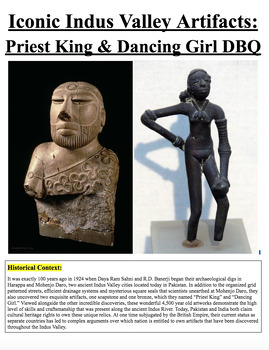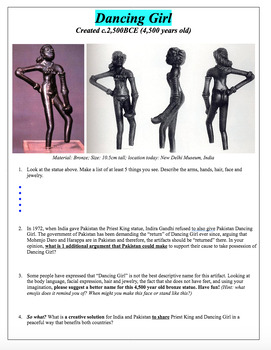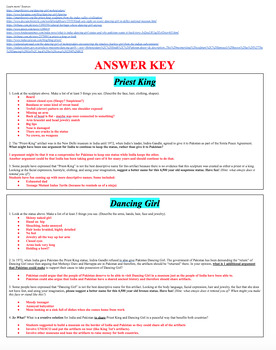Iconic Indus Valley Artifacts: Priest King & Dancing Girl DBQ
- Google Docs™

Description
This primary sources artifact activity (DBQ) was created with 6th graders in mind and is appropriate while studying Ancient India/Ancient Pakistan/Indus Valley/South Asian History/Ancient Artifacts and Archaeology/Bronze Age/Art History. Students will examine two 4,500 year old artifacts uncovered 100 years ago in the Indus Valley (modern Pakistan). They will observe, discuss and analyze these incredible artifacts through guiding questions. They share observations, make inferences and learn how ancient artifacts are used as bargaining chips in modern diplomacy. Be aware that the "Dancing Girl" statue is naked and students usually laugh at first glance. My classes had fun renaming both statues since their current names do not describe them accurately. Answer key included!





